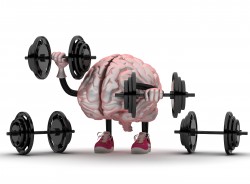Learning Disabilities
Can Neurofeedback Help Learning Disabilities?
 Many of the methods used and promoted to help people with learning disabilities are intended to help a person compensate for, or work around, their learning difficulties.
Many of the methods used and promoted to help people with learning disabilities are intended to help a person compensate for, or work around, their learning difficulties.
Instead, neurofeedback actually improves learning skills by training the areas of the brain relevant to learning or execution skills such as math, reading, and auditory and visual processing.
Neurofeedback is increasingly being used to treat learning disabilities because it is:
- effective
- non-invasive
- painless
- has no undesirable side effects
How Does Neurofeedback Improve Learning Skills?
 Research studies show that several areas of the brain work together in the learning process. These separate parts of the brain communicate with each other at extremely fast speeds. If the timing of the communication is even slightly off, there can be impairment in the ability to learn. New research shows that “connectivity training” appears to consistently improve learning difficulties.
Research studies show that several areas of the brain work together in the learning process. These separate parts of the brain communicate with each other at extremely fast speeds. If the timing of the communication is even slightly off, there can be impairment in the ability to learn. New research shows that “connectivity training” appears to consistently improve learning difficulties.
Neurofeedback training can improve the coordination and communication between different areas of the brain. Improved timing in the brain has a significant impact on one’s ability to learn. To use an analogy, even with good timing it is difficult to hit a baseball or volley a serve. Imagine how difficult it would be if your timing was entirely wrong. This is what it’s like to try and learn when the timing of communication in the brain is off. Neurofeedback directly targets the coordination and communication between areas of the brain to improve timing, and therefore learning.
How Is Neurofeedback Done?
 Small sensors are placed on the person’s head and are connected to a specialized computer system. The computer measures brain waves and rewards the brain for making healthier patterns and producing better timing and connectivity. Often a brain map is used that shows malfunctioning areas of the brain and helps the clinician create a brain training plan. In essence, as the brain makes healthier patterns, and the computer rewards it.
Small sensors are placed on the person’s head and are connected to a specialized computer system. The computer measures brain waves and rewards the brain for making healthier patterns and producing better timing and connectivity. Often a brain map is used that shows malfunctioning areas of the brain and helps the clinician create a brain training plan. In essence, as the brain makes healthier patterns, and the computer rewards it.
With practice and training, the brain learns to make healthier patterns on its own consistently, with better connectivity and timing. The result is an improved ability to learn, which is long-lasting once patterns are established and holding.
The length of treatment is dependent on the individual person, and a reduced follow-up training schedule may be needed to maintain consistent results. Neurofeedback therapy is painless, and most children seem to enjoy and respond well to the treatment since, for them, it’s like playing a video game with their brain.
To learn more about how neurofeedback can help with learning disabilities or cognitive functioning, please visit our Neurofeedback Provider List to see if we have a clinician listed near you.

